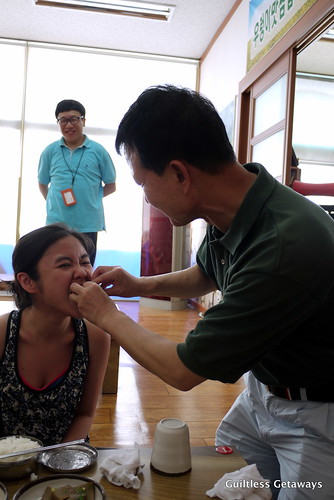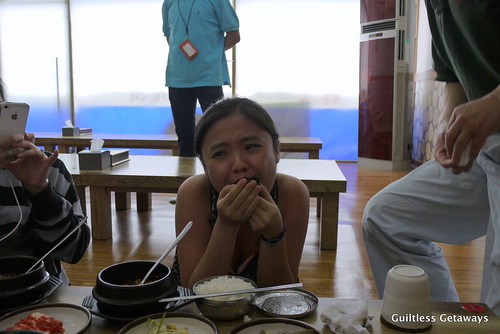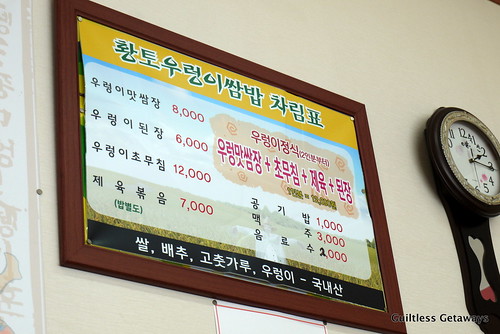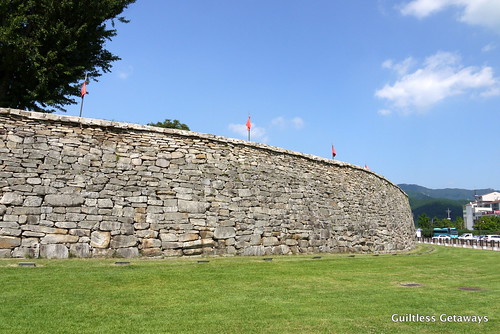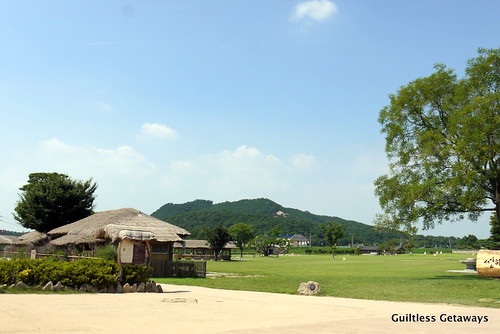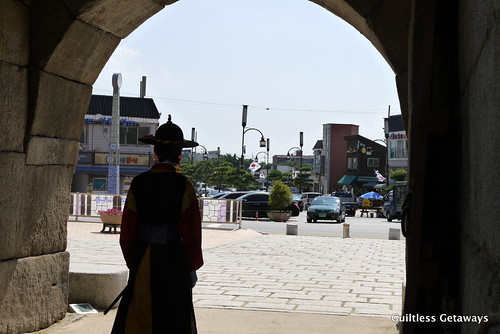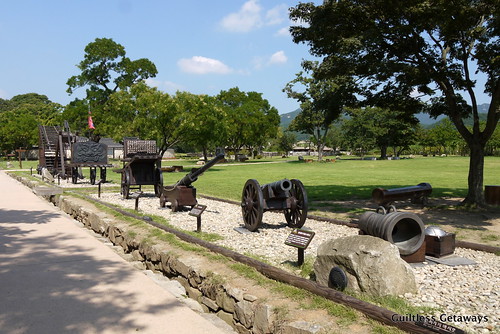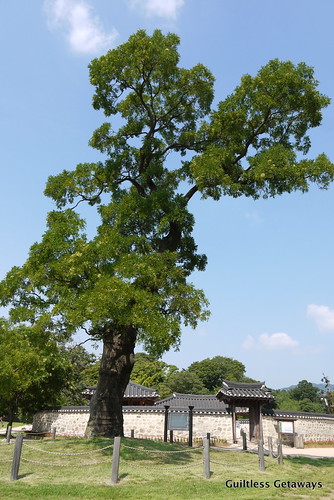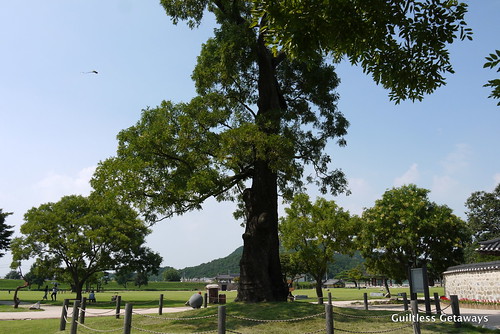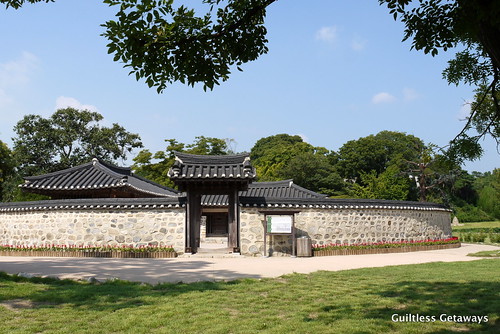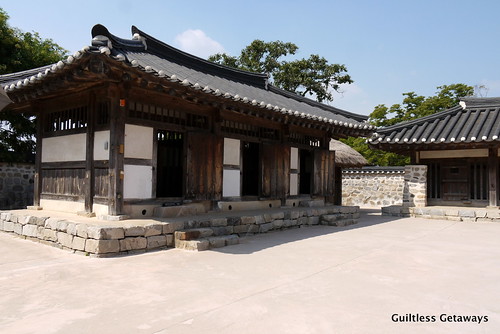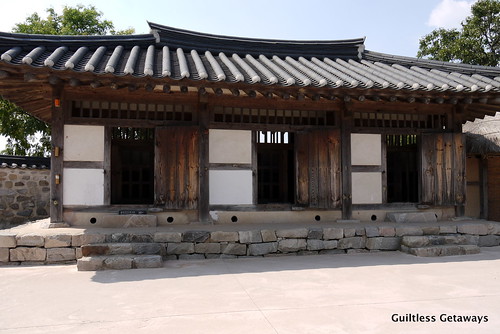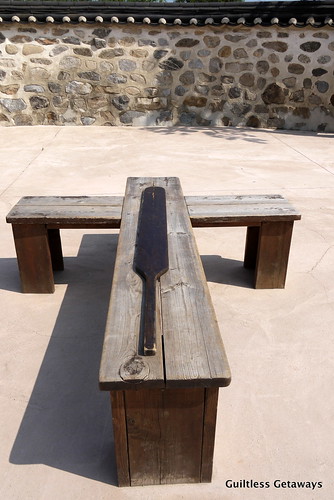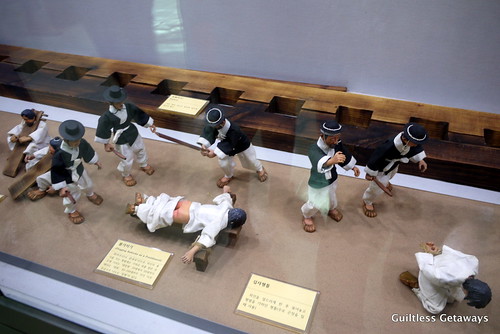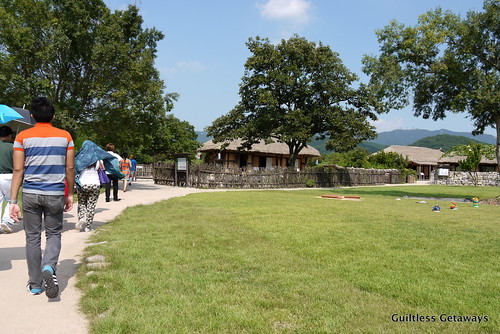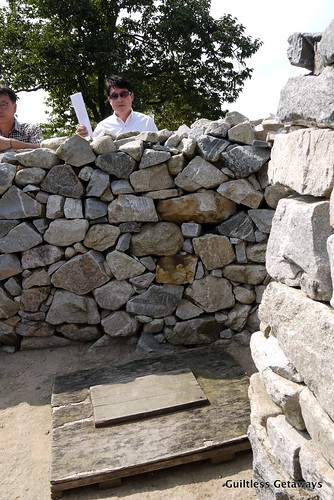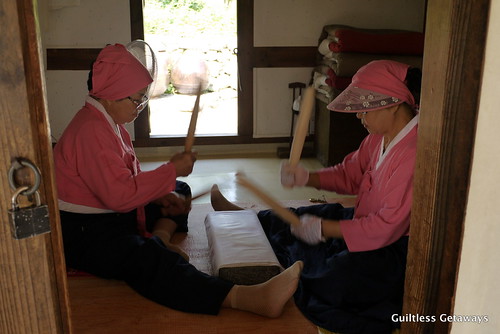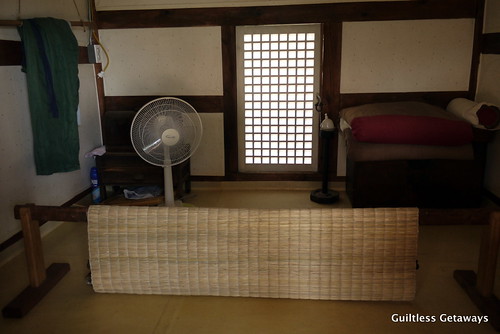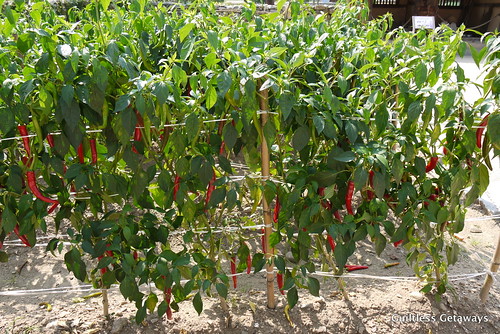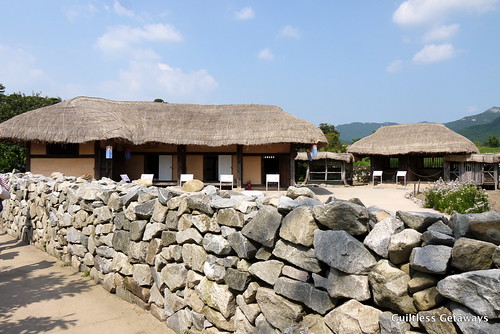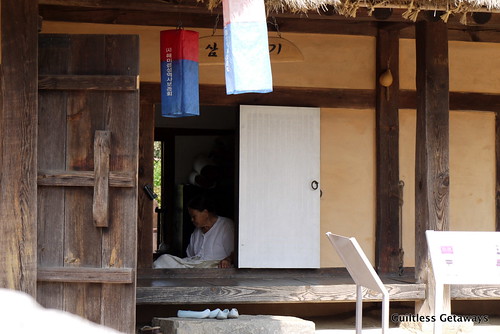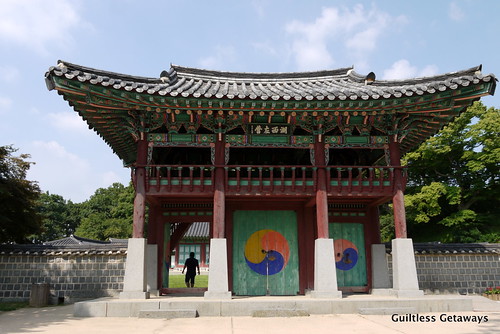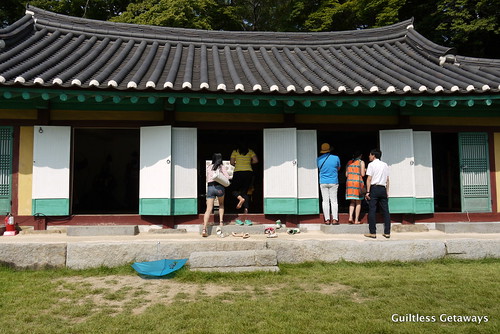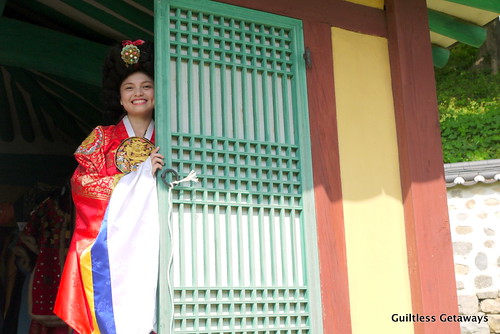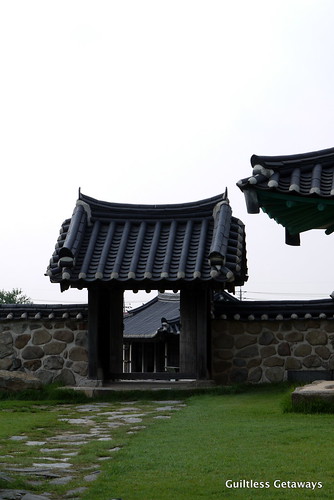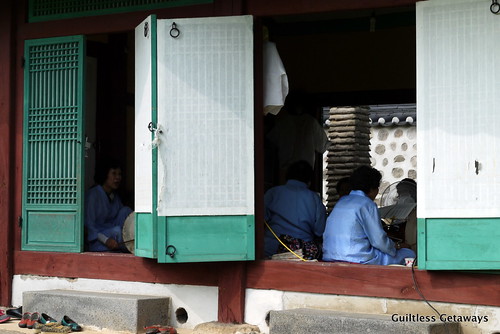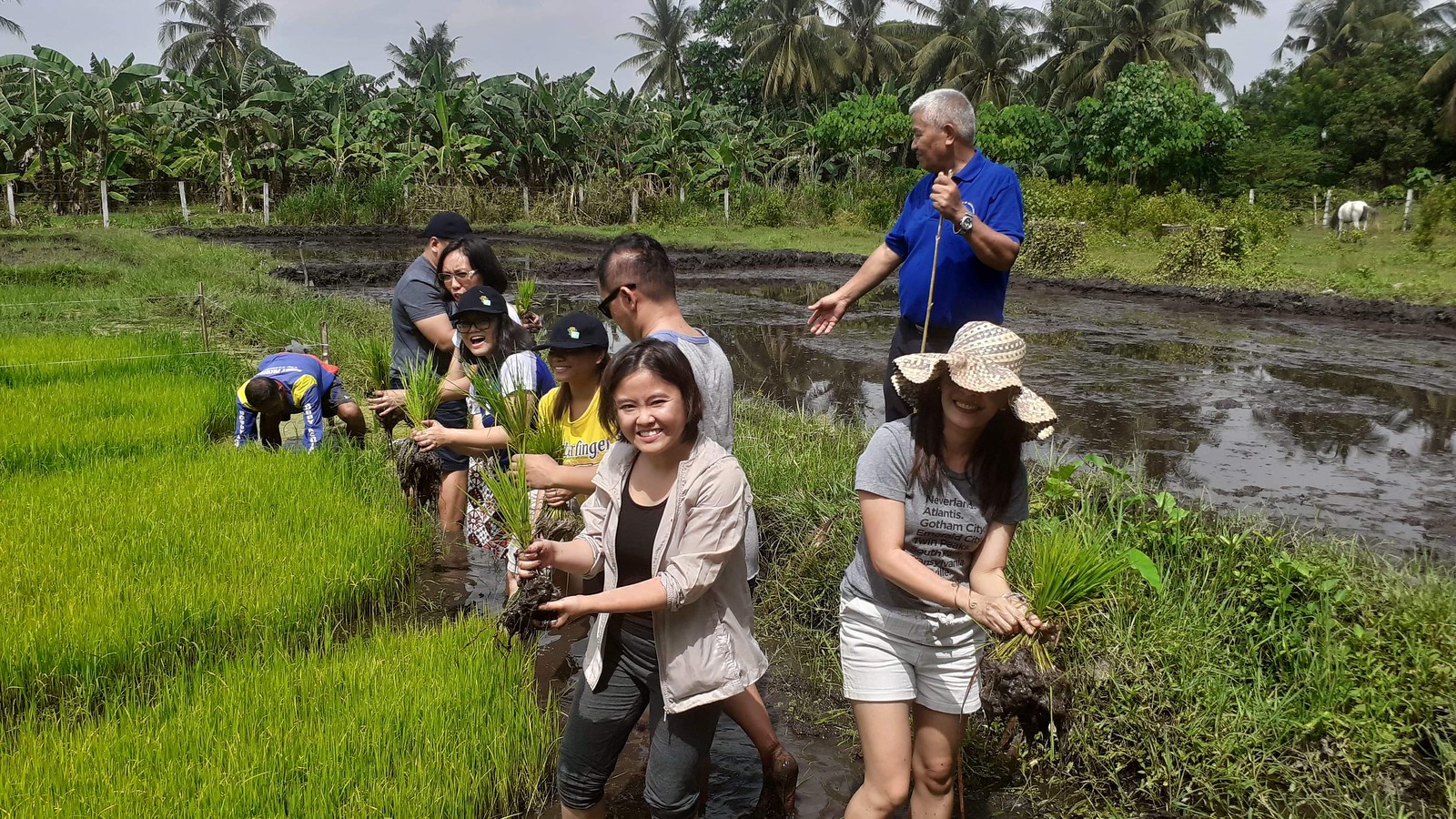Whenever I go to Korea, I usually stay in Seoul or Busan because I feel like there's so much I haven't gone to yet. I do go on day trips if I find a tour or someplace that piqued my attention. The Korea Tourism Organization (KTO) took us to Seosan City this time in the province of Chungcheongnam via bus from Busan to visit the same pilgrimage sites as Pope Francis did just last year. From Seoul, you can just hop on a bus from the Seoul Nambu Bus Terminal to the Seosan Bus Terminal and get there in about two hours. You can go to the Haemie Terminal Bus stop to get to the Seosan Haemieupseong Fortress in this post. You can also try the fresh water snail specialty of the restaurant beside it. ;)
Our guide said that most, if not all, restaurants in the countryside have floor seating only. Indian sit is fine for my size but maybe if you got long legs then just go sit on the kabisera and have your legs straight. I go for the ones near the dishes I would eat and those who I want to converse with for the meal haha.
I think a set like this can already feed 4 people. From middle to bottom, there's spicy snail, snail duenjangjigae, salad-like snail, banchan
and this dish with more fresh water snails ;) The flavor was alright and the texture is more crunchy than chewy.
Mr. Kim just had to show me how to eat it Korean-style! He put some of the seasoned snail in the stone pot on a leaf with rice and shoved it all in haha.
You're supposed to eat it whole but I can only do three bites minimum haha.
Right next door is the Haemi Fortress. It's a stronghold completed in 1491 (Joseon dynasty) against Japanese pirates who rob villages and thieves of goods on the way to Seoul in the olden days.
It's one of four remaining well-preserved fortresses (out of around 190 built) in Korea today.
They've restored it beautifully.
"Haemi" is named such for facing the sea and our local guide said that once upon a time, it did.
Here are some samples of artillery they used then. They had long range weapons, arrows and such.
This is no ordinary 350-year old tree. It's called the Hoya tree (pagoda tree) and it was witness to hundreds, if not thousands, of the grim moments in Korean history.
If you look closely, there are rope marks already etched into the tree from hundreds of years ago (1800s). Confucianism was the state religion during the Joseon dynasty and Catholicism started spreading from China to this part of Korea. What followed were numerous persecutions of believers. They were tied to this tree and usually ended up dragged to the West Gate to be punished or to be beheaded.
Today, only this tree survived to tell the tale.
most likely suffered in prison.
The nobles had it better. They had doors and the ondol floors to keep them warm.
The lower class had to endure or freeze to death, esp. in winter.
It's ironic that you can be punished with these cross-shaped paddles. There's a maximum number of 30 hits to save the prisoner from sure death. I heard there's a stone bridge called Jarigaejil (referred to "hitting grain with a thick rope made of straw to sort the grain") where Christians were "smashed as if they were thick ropes of straw". What's your poison?
Another part of today's Haemi Fortress are traditional tatched roof houses that were moved here from their original locations.
Our guide said that you can count the number of beams to determine the social status of the homeowners. This is a typical Korean house in the 1960s and 1970s, she said. Old houses were usually made of clay and wood (they burn easily) so not a lot of these remain today.
The toilet is outside.
Guess what they're doing? You could hear them from afar! They're ironing clothes!!! Maybe this is how they iron hanboks at that time...
This room is multi-functional with some modern comforts. Remember my friends' convertible rooftop home I went to in Seoul?
They probably planted their own chilies and buried kimchi in their backyards too :)
I was told that nobody really lives here.
You do see her, right? Haha. O_O
You could probably spend all day here and not finish this 200000 square-meter site.
We visited a more original structure next.
Generals and officials used to convene here and strategize their next move.
The building behind that has been converted into a cultural experience center.
My mates rushed to the costumes and spent a great deal of time there. There's a top-notcher one with the flower headdress that I've never seen before. The state examination during that time only happens once every 3 years ;)
It was too hot at that time for me and I wanted to explore more. I wonder where this leads.. I hope they add more English signages, descriptions and guides.
I wished we had time to hear the ajummas play the janggu...
Imagine this place alive full of tents, training areas, weapon areas and barracks. There's a festival here held every year in October (Seosan Haemiupseoung Fortress Festival 서산해미읍성역사체험축제) wherein they revive that sentiment. I know we cannot erase the painful past but everybody must have had their own explanation to justify what they did at that time. They've recreated this place to give travellers a glimpse of history and a joyful (and hopeful) place to go to at the present moment. Pope Francis held the closing mass for the 6th Asian Youth Day here and said "Wake up from the darkness" at some point. Do check out this place if you have time. Here's how to go there. Admission is kept free for the curious.

This trip was made possible by Asiana Airlines Philippines, Korea Tourism Organization Manila, USTravel, Korea Tourism Organization Daejeon Chungcheongnam-do Promotion Office, the Chungnam Tourism Industry and the Chungcheongnam-do Provincial Government. Korea is now MERS-free according to KTO and I just went there this August 2015.
Asiana Airlines flies once daily from Manila to Busan or Seoul and vice versa. You can book through your favorite local travel agencies about this tour.





